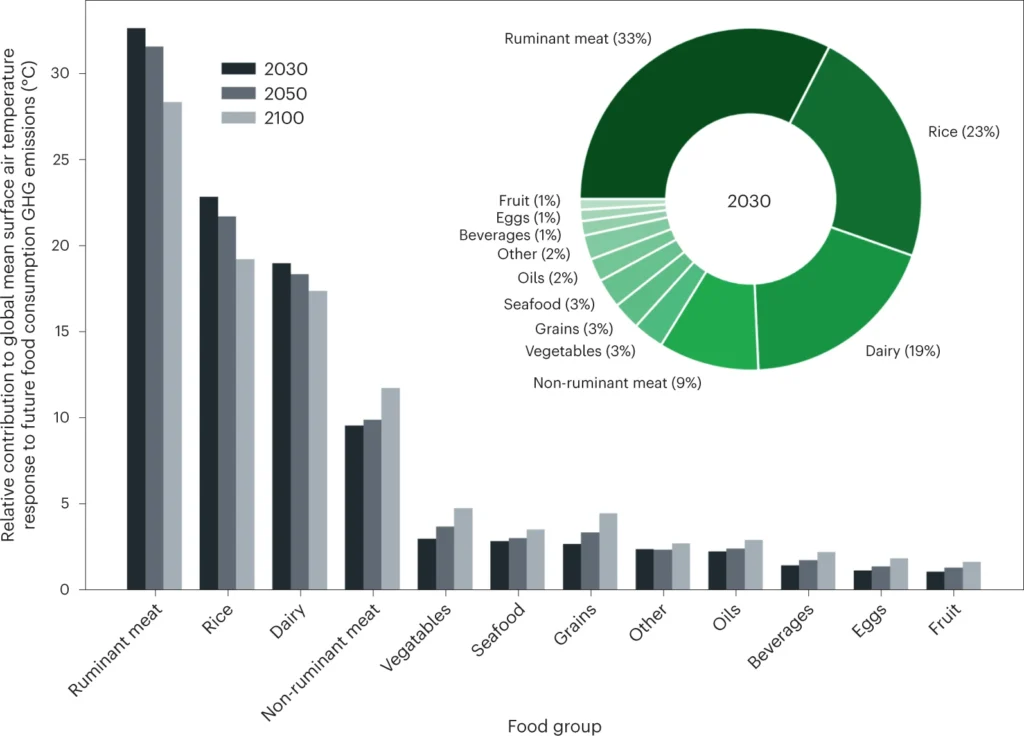Can Plant-Based Proteins Truly Replace Meat?
Beef! It’s iconic, sizzling on grills and headlining countless dishes worldwide. But behind its mouthwatering allure lies a hefty environmental cost. How does beef measure up against plant-based proteins? Are these alternatives ready to replace meat entirely? Let’s dive in and uncover the truth about sustainable protein sources.
The Climate Footprint of Beef: The Hidden Costs
The journey from pasture to plate paints a sobering picture. Beef production is one of the most resource-intensive forms of agriculture, with substantial environmental implications:
Methane Emissions: A Climate Culprit
Cattle are ruminants, producing methane during digestion—a greenhouse gas 28 times more potent than CO₂ over 100 years and a shocking 84 times stronger over 20 years (source: EPA).
Land Use and Deforestation
Beef production is a major driver of deforestation, particularly in regions like the Amazon rainforest (source: The Washington Post), where large areas of forest are cleared to make way for cattle ranching. Trees play a crucial role in absorbing carbon dioxide (CO2) from the atmosphere, and when forests are cut down, this carbon is released back into the atmosphere, contributing to climate change. Additionally, deforestation disrupts local ecosystems, destroying habitats for wildlife and leading to a loss of biodiversity. The conversion of forests to pastureland also reduces the Earth’s natural carbon sinks, which are vital for regulating climate and maintaining environmental balance. As a result, beef production has both direct and indirect environmental impacts that go far beyond just the animals themselves.
Resource-Intensive
Producing just one kilogram of beef generates 20–50 kilograms of CO₂ equivalent emissions, vastly overshadowing plant-based protein sources like beans or lentils. It also consumes significant water, land, and energy resources.
The Numbers
Estimates suggest livestock accounts for 11–19.6% of global greenhouse gas emissions, with beef being a major contributor.
Future Projections
Ivanovich et al (2024, link), suggest food consumption is a significant source of greenhouse gas (GHG) emissions, potentially contributing nearly 1°C of global warming by 2100, with methane-heavy foods like ruminant meat (which includes beef), dairy, and rice being the main culprits. However, over 55% of this warming can be avoided through improved production practices, healthier diets, and reduced food waste at the consumer and retail levels. Below is an interesting figure from their study:

Source: Ivanovich, C.C., Sun, T., Gordon, D.R. et al. Future warming from global food consumption. Nat. Clim. Chang. 13, 297–302 (2023). https://doi.org/10.1038/s41558-023-01605-8
Rising to the Challenge: Plant-Based Protein Alternatives
The demand for sustainable food has sparked innovation in plant-based proteins. These alternatives are not only eco-friendly but also packed with nutrients, making them a viable option to replace meat.
Top Plant-Based Protein Alternatives
- Legumes (Beans, Lentils, Chickpeas): Protein-rich, versatile, and perfect for dishes like stews, curries, and salads.
- Mushrooms: A natural umami booster, ideal for burgers, tacos, or creamy risottos.
- Tofu and Tempeh: High in protein and adaptable to any flavor profile—perfect for stir-fries, scrambles, or even desserts.
- Plant-Based Burgers: Brands like Beyond Meat and Impossible Foods deliver satisfying taste with a fraction of the carbon footprint.
- Jackfruit: Known for its meat-like texture, it’s a star in pulled “pork” sandwiches, curries, and tacos.

Why Go Plant-Based? The Ripple Effect
Switching to plant-based proteins doesn’t just reduce your personal carbon footprint. It drives global sustainability through:
- Land Reallocation: Supporting reforestation and biodiversity.
- Water Conservation: Plant proteins need significantly less water to produce.
- Ethical Impact: Eliminating animal agriculture reduces animal suffering.
| Category | Beef | Plant-Based Protein Sources |
| Carbon Footprint | High – Produces significant methane emissions and has a large carbon footprint. | Low – Produces minimal greenhouse gases, especially legumes and mushrooms. |
| Land Use | Requires vast amounts of land for grazing and feed crop cultivation. | Requires much less land, often sustainable through vertical or localized farming. |
| Water Use | High – Requires thousands of liters per kilogram of beef produced. | Low – Legumes and other plant-based sources use a fraction of the water. |
| Nutritional Content | High in protein and essential vitamins like B12 and iron, but often contains high saturated fat and cholesterol. | High in protein, fiber, and antioxidants, often lower in fat and free from cholesterol. |
| Ethical Considerations | Involves animal farming, raising concerns about animal welfare. | Cruelty-free, with no reliance on animal agriculture. |
| Impact on Biodiversity | Contributes to habitat destruction and deforestation. | Preserves biodiversity by reducing deforestation and ecosystem damage. |
| Health Risks | Linked to heart disease, high cholesterol, and some cancers when consumed in excess. | May reduce the risk of chronic diseases like heart disease and diabetes. |
| Availability | Widely available but increasingly expensive due to environmental regulations. | Growing availability of innovative plant-based options in most markets. |
| Cost | Typically more expensive due to production and resource intensity. | Often cheaper, especially staples like lentils, beans, and tofu. |
| Sustainability | Unsustainable in the long term due to resource overuse and emissions. | Highly sustainable with minimal environmental impact. |
Making the Switch: A Beginner’s Guide to Plant-Based Eating
Transitioning to a plant-based diet is easier than you think:
- Start Small: Replace one beef meal per week with a plant-based dish.
- Experiment: Use bold spices and herbs to explore global cuisines.
- Learn & Share: Join online communities, cooking classes, or share plant-based meals with friends and family.
The Future of Protein: A Delicious, Sustainable Shift
Beef might dominate menus today, but plant-based proteins are stepping up with innovation, taste, and sustainability. Every meal choice matters—by choosing vegan protein options, we can create a greener, more delicious future.
Go plant-based, help mother nature!
PS: Here is a related article I published, which is a must read if you want to explore plant-based superfoods: Climate-Friendly Superfoods: The Top Superfoods for a Better Future.


